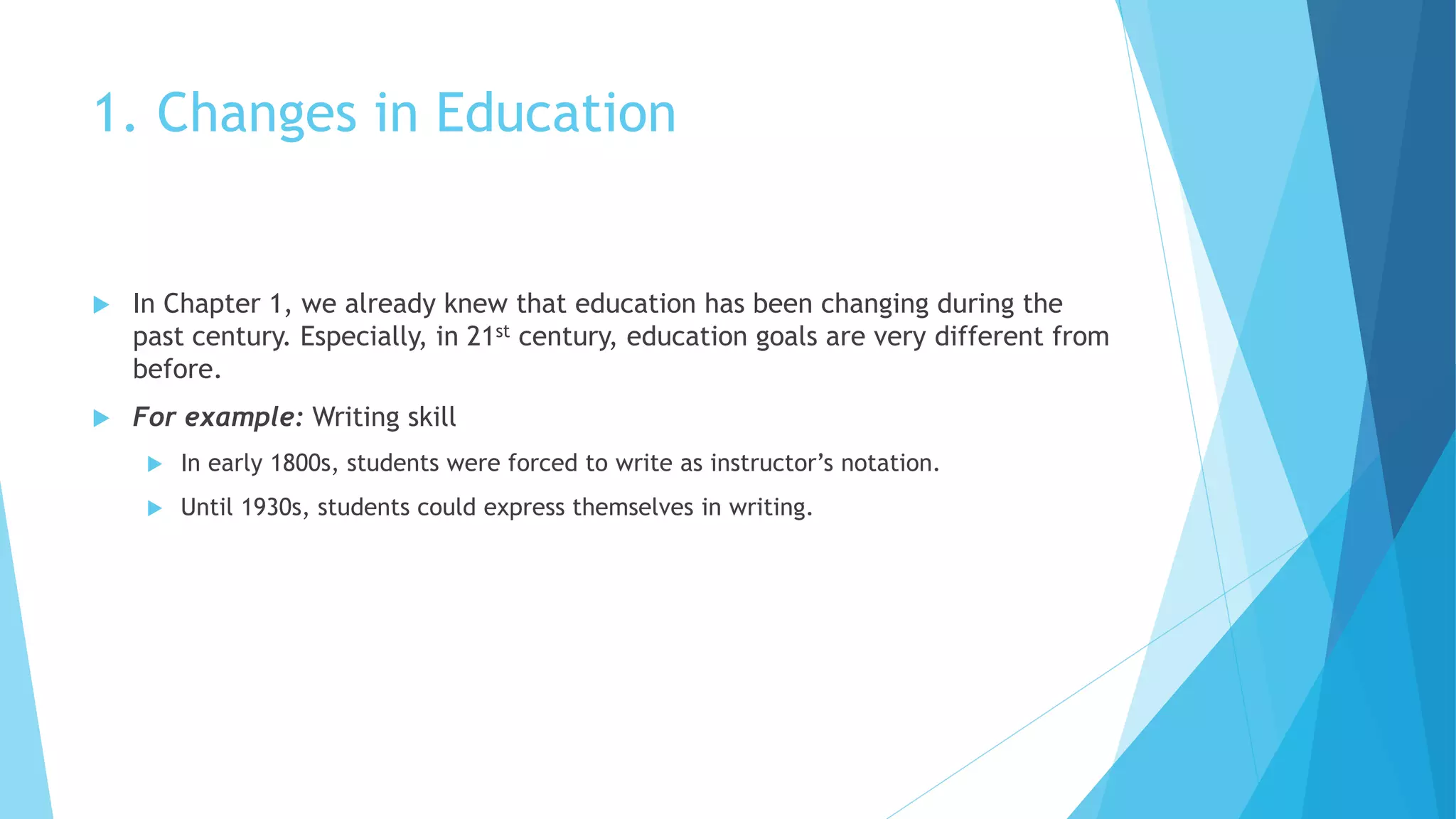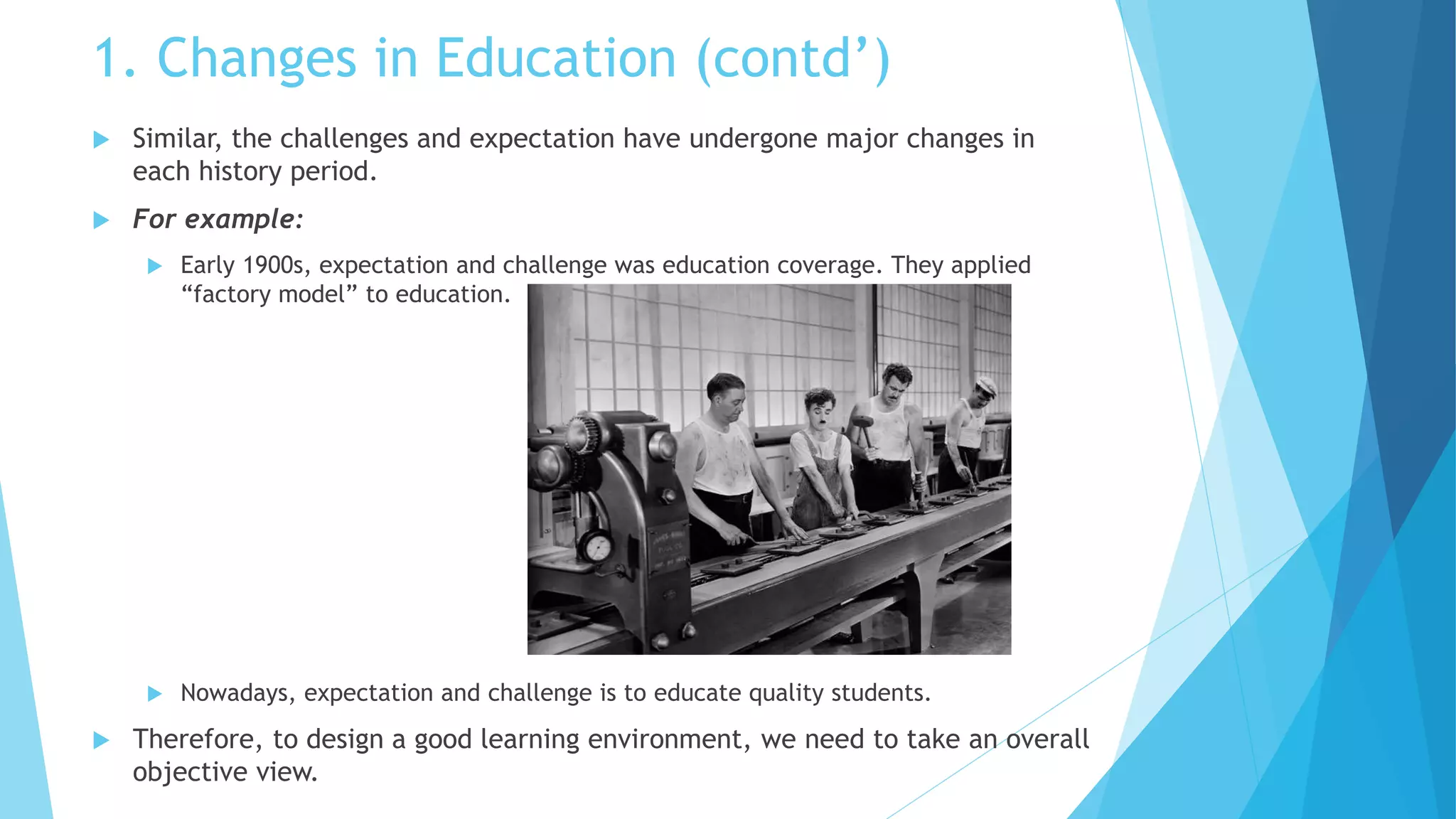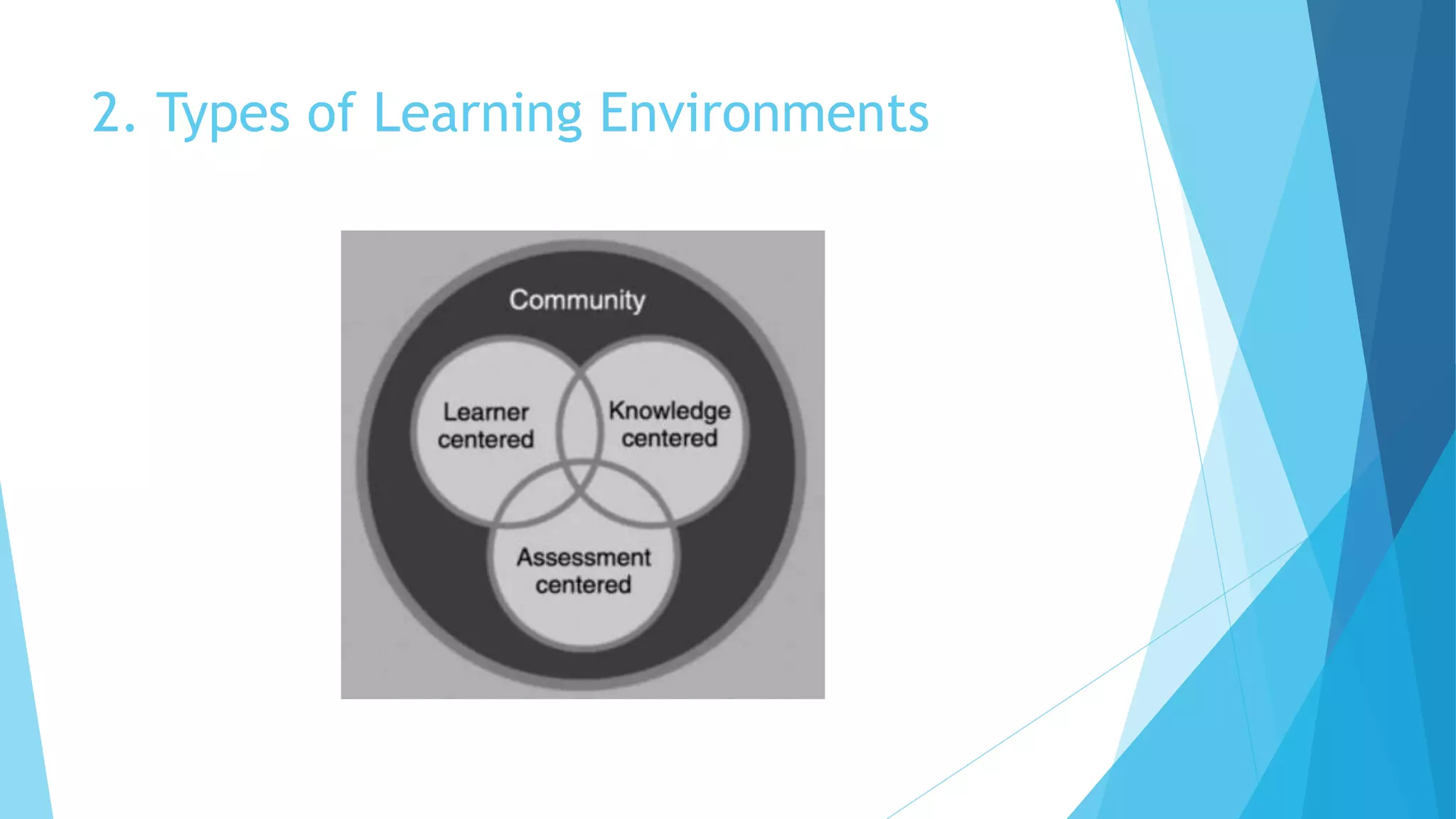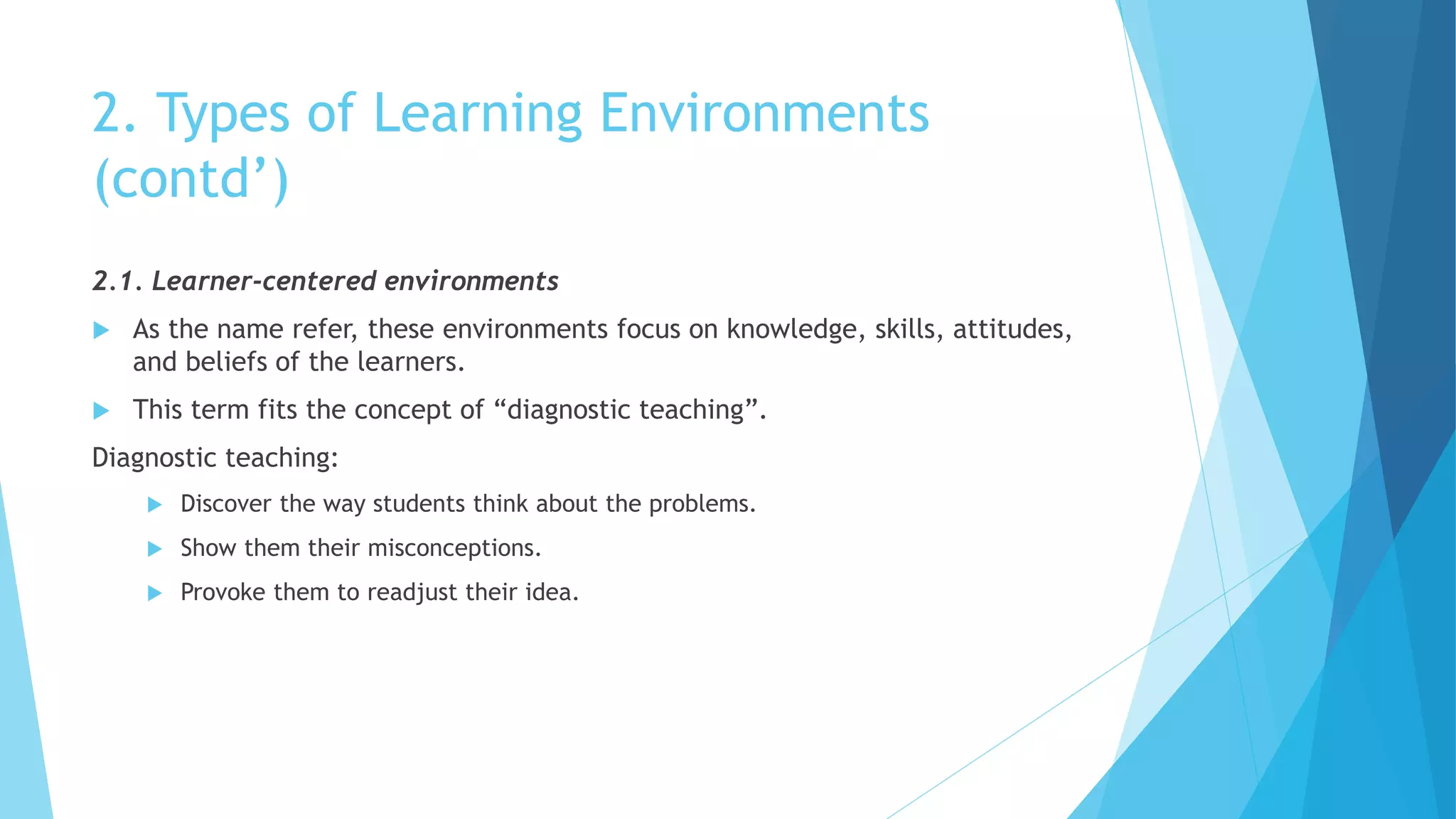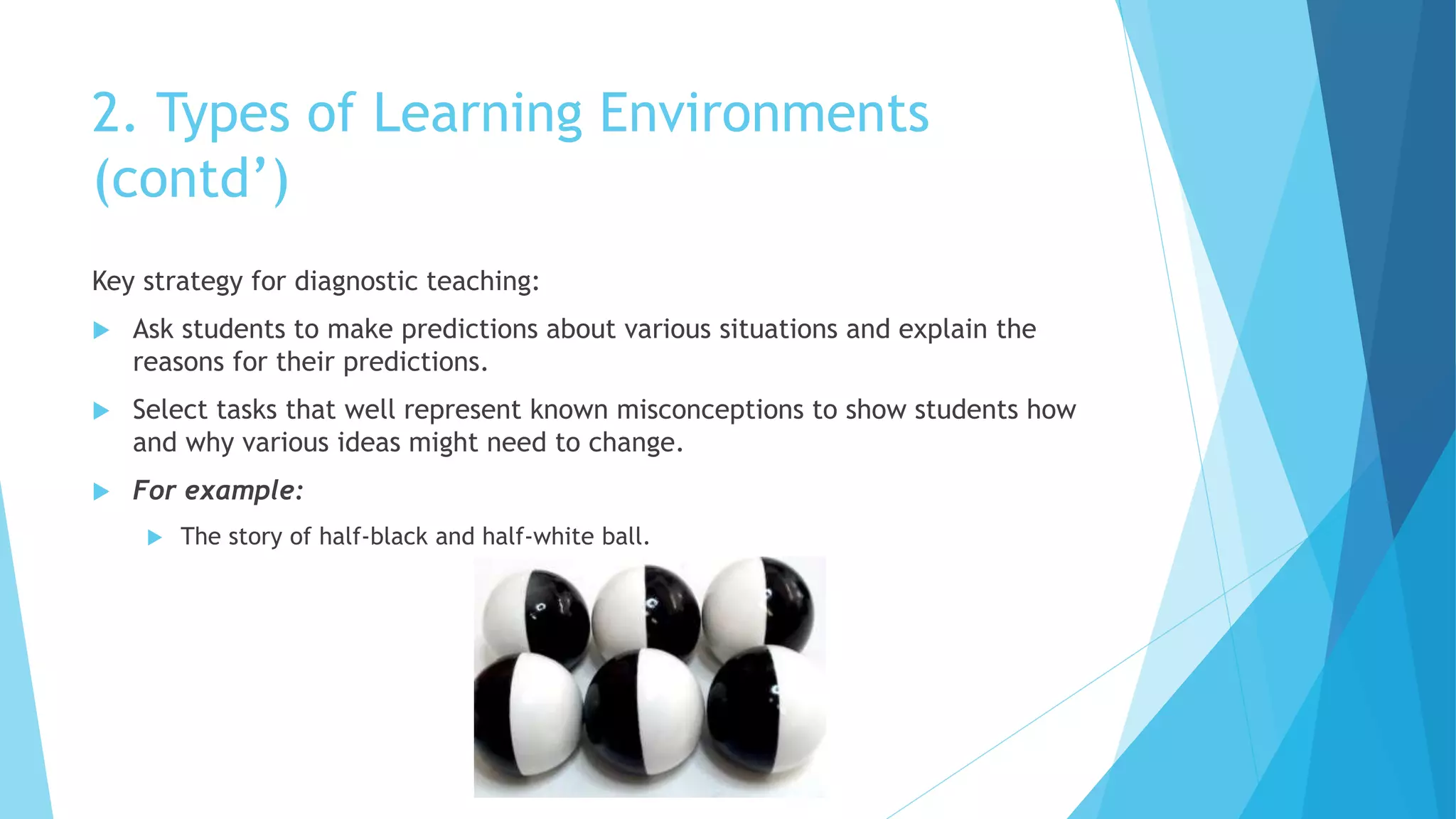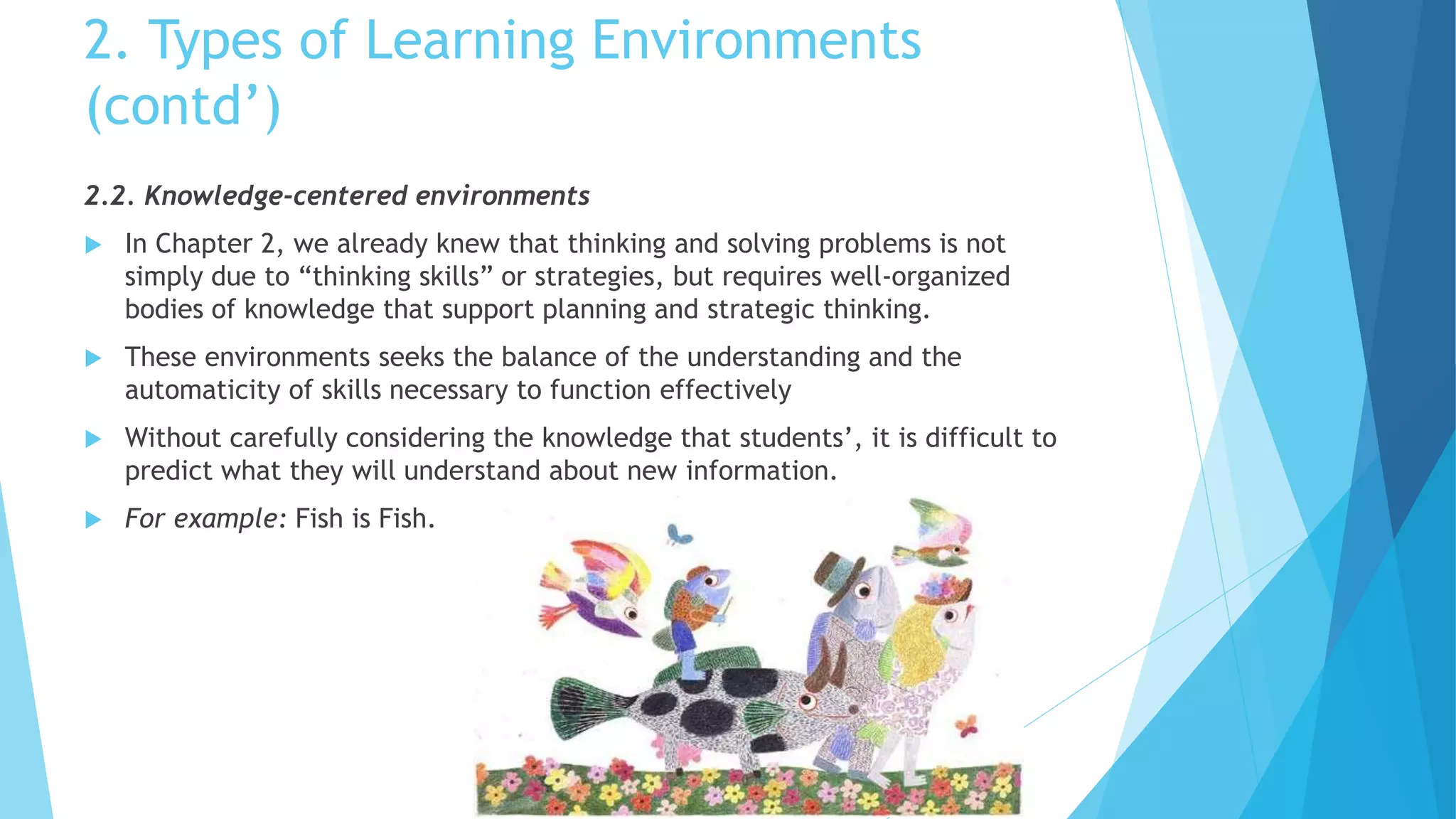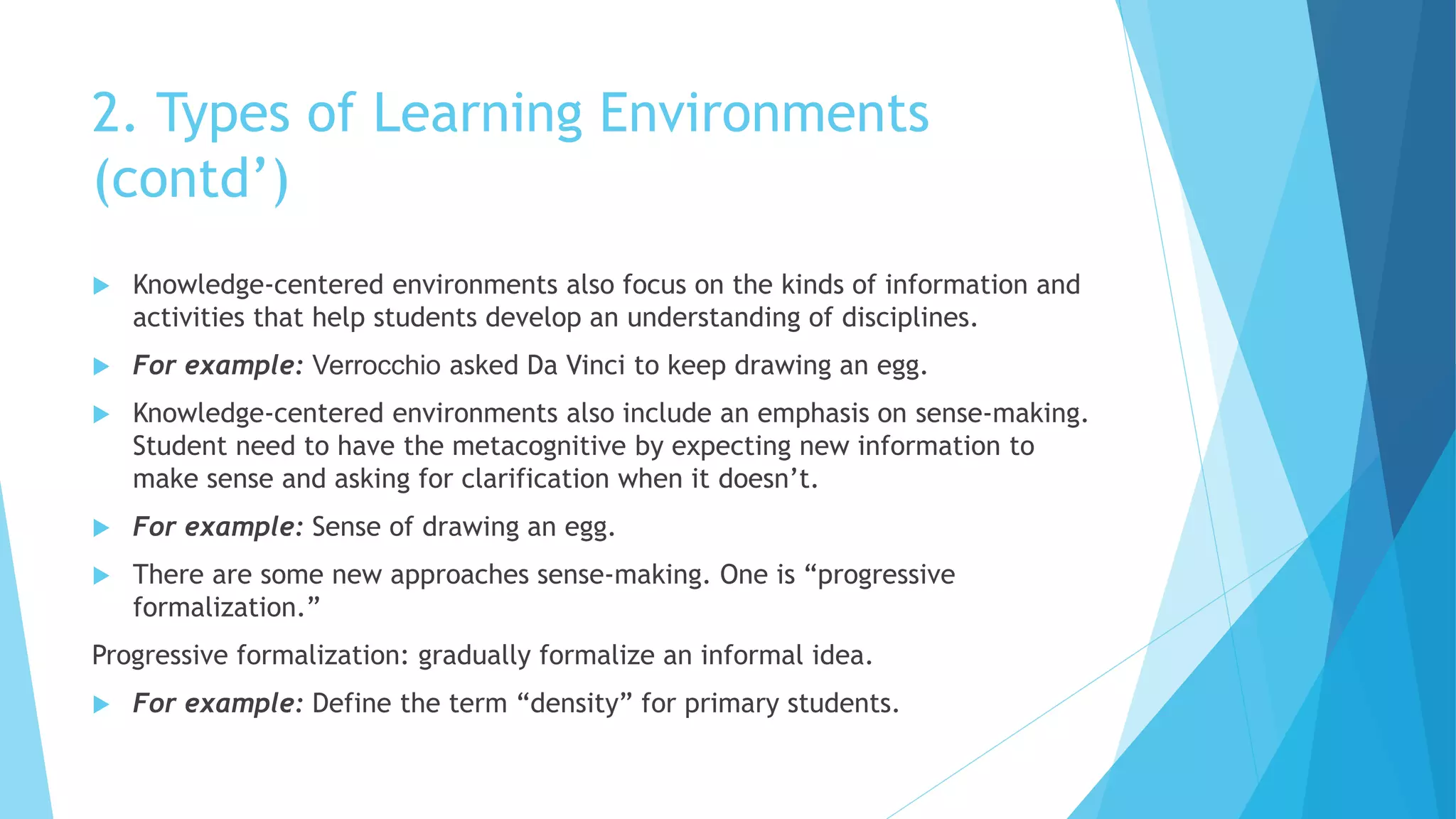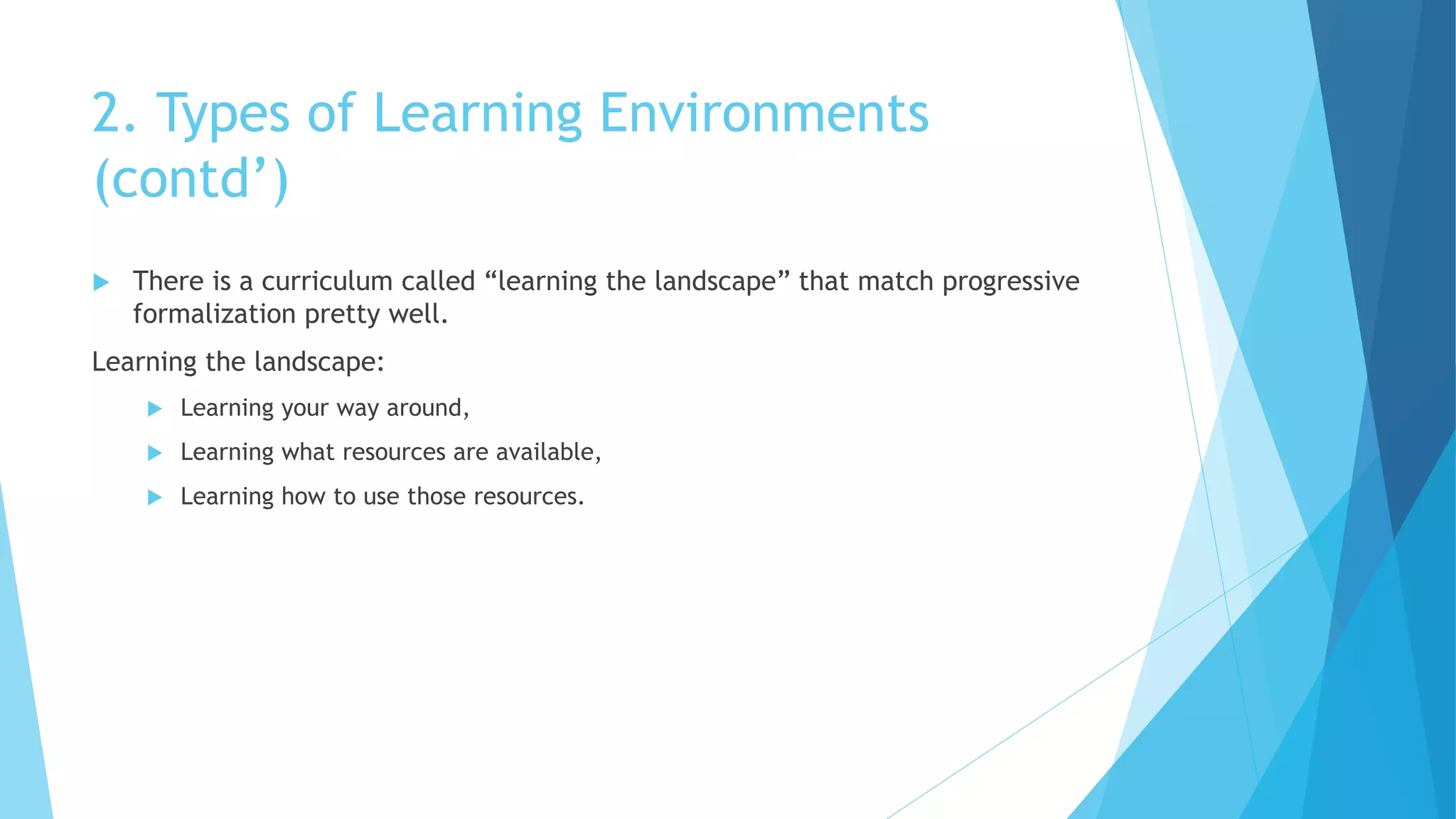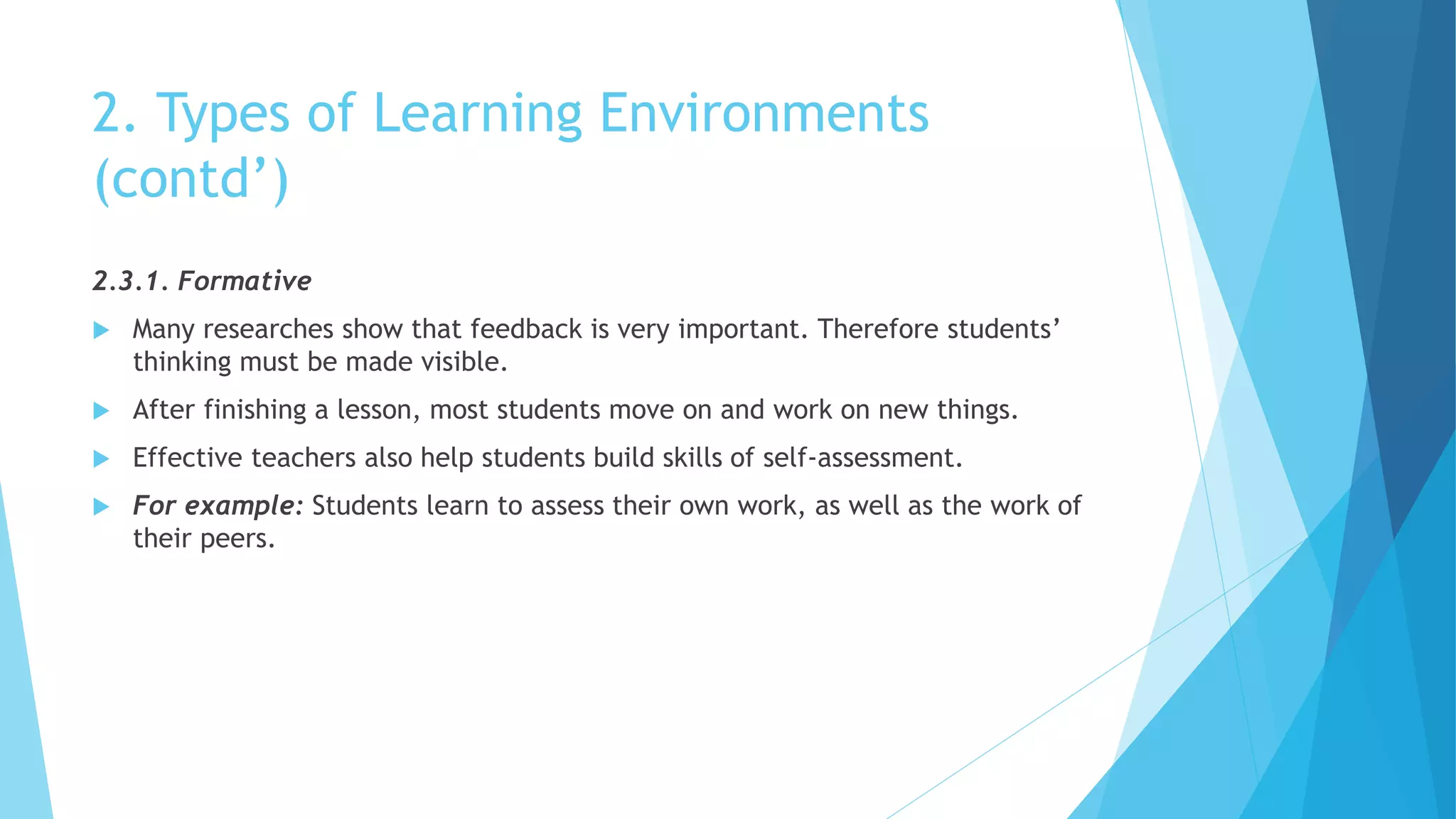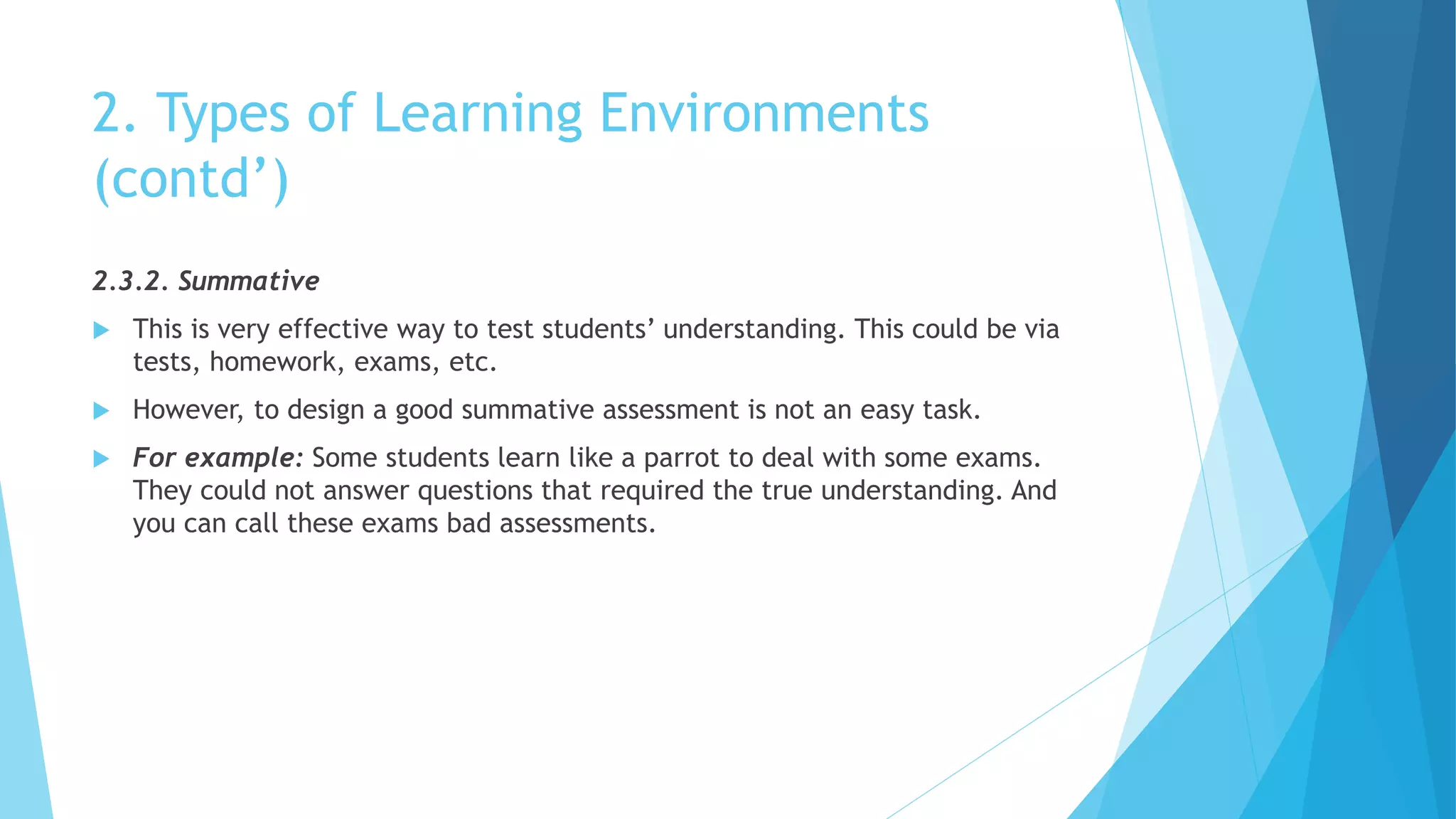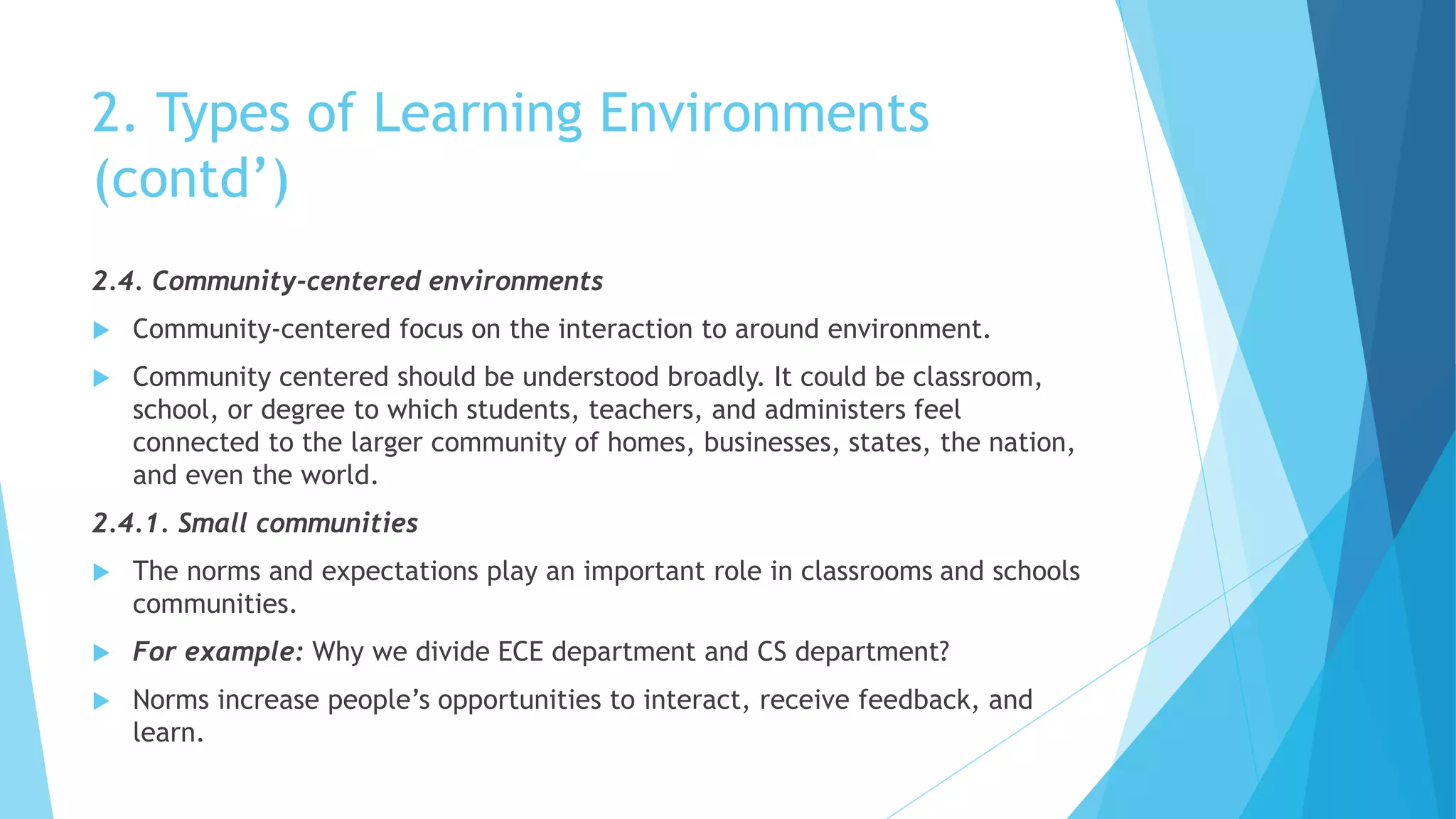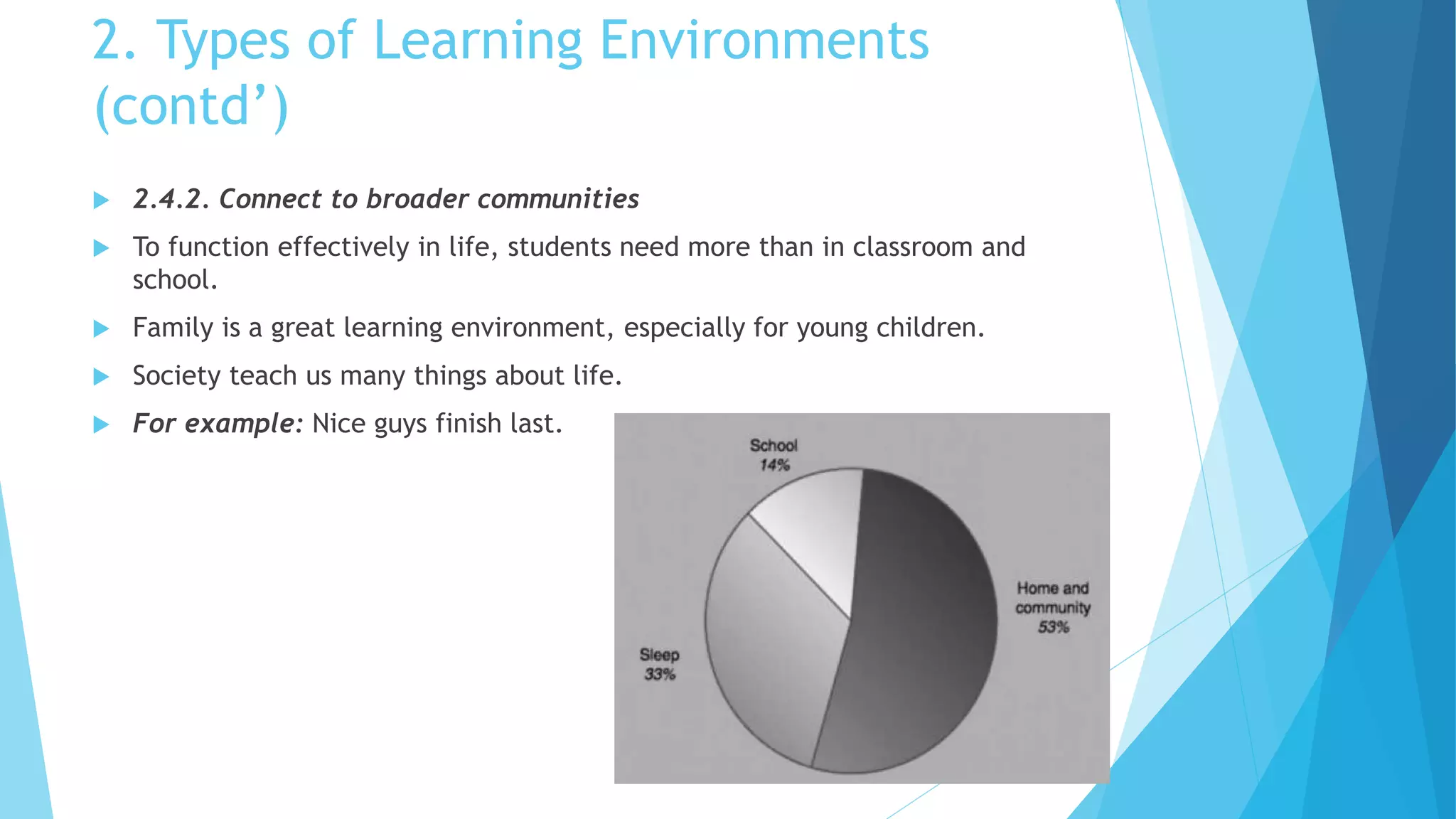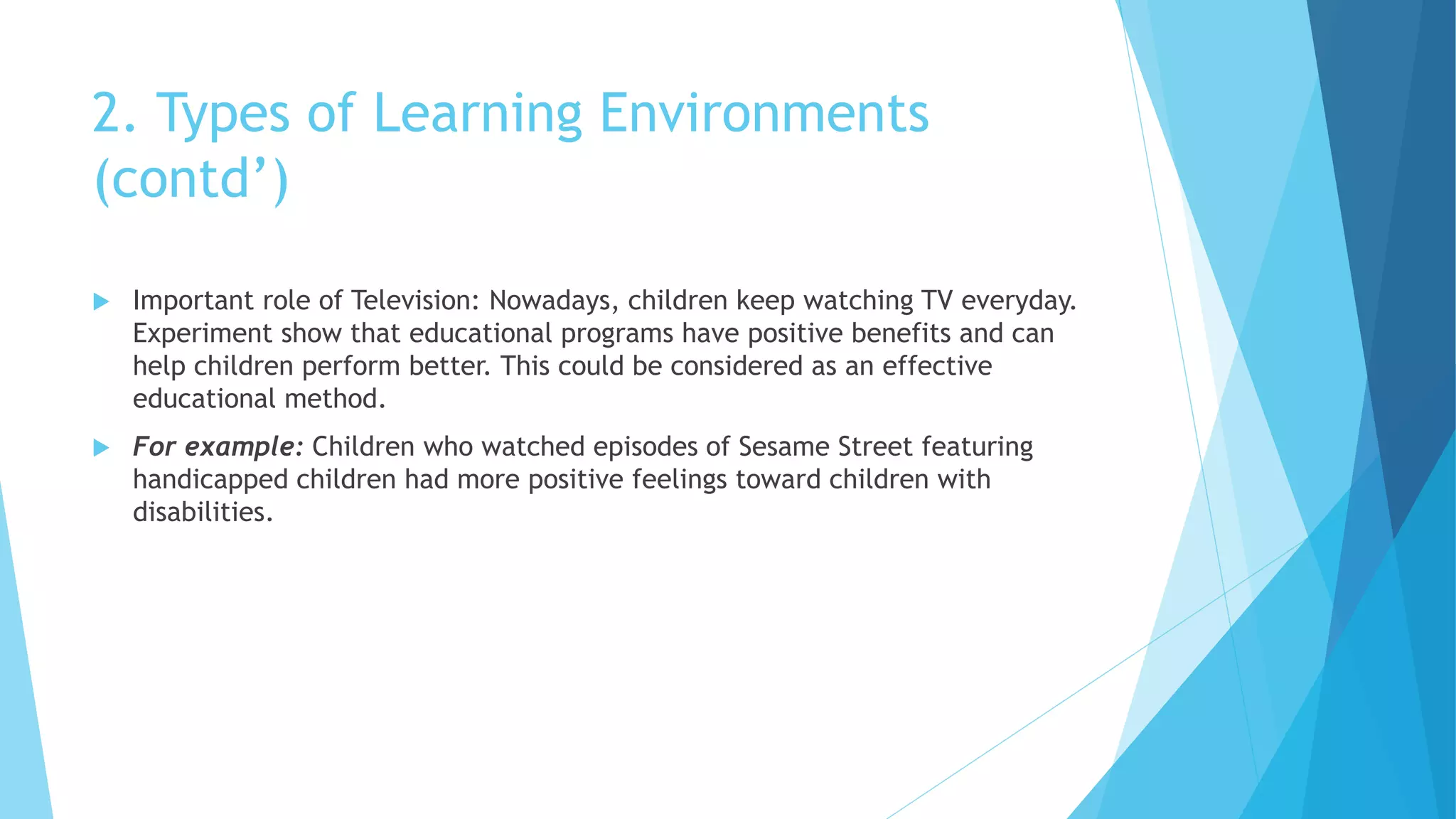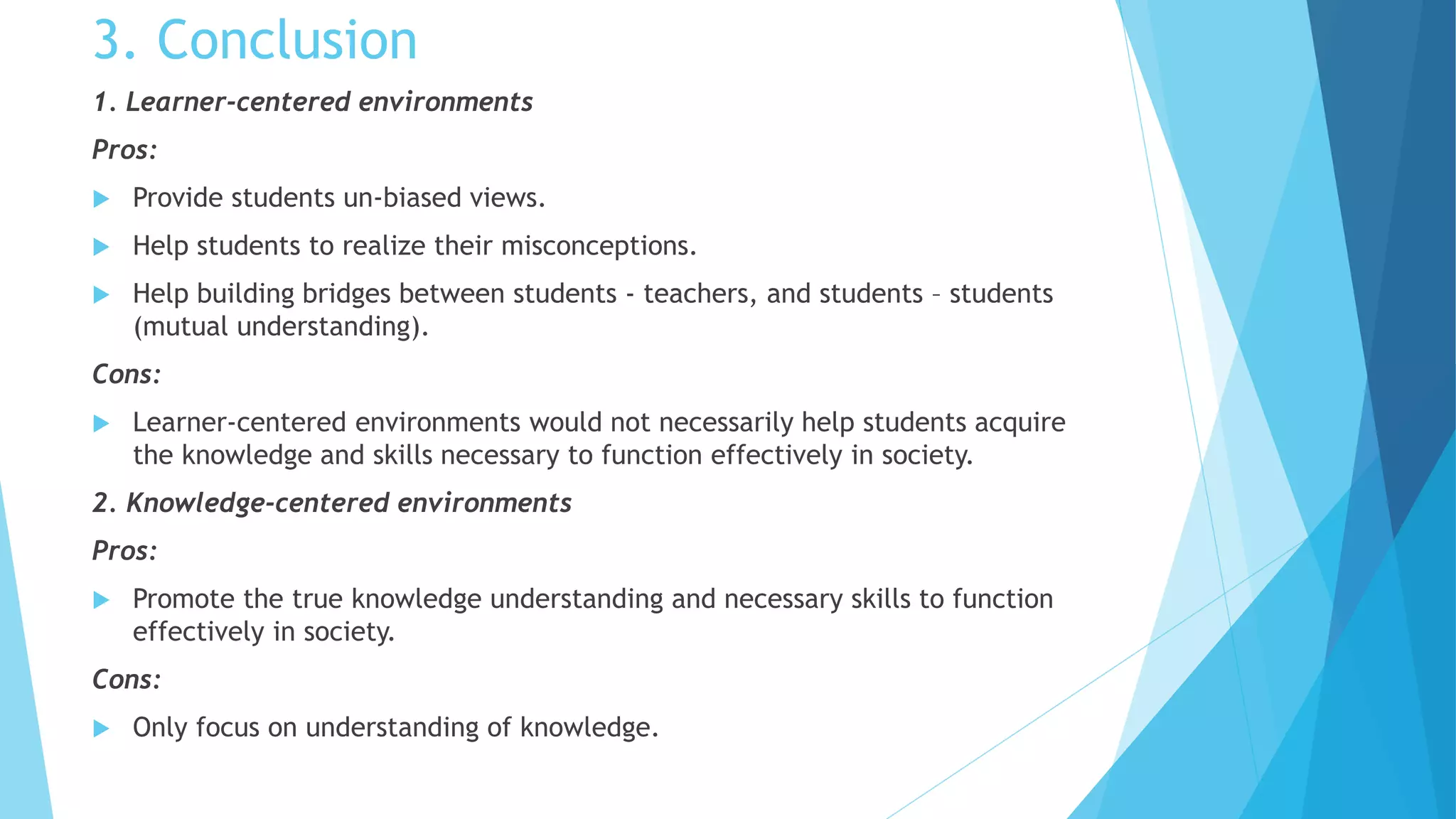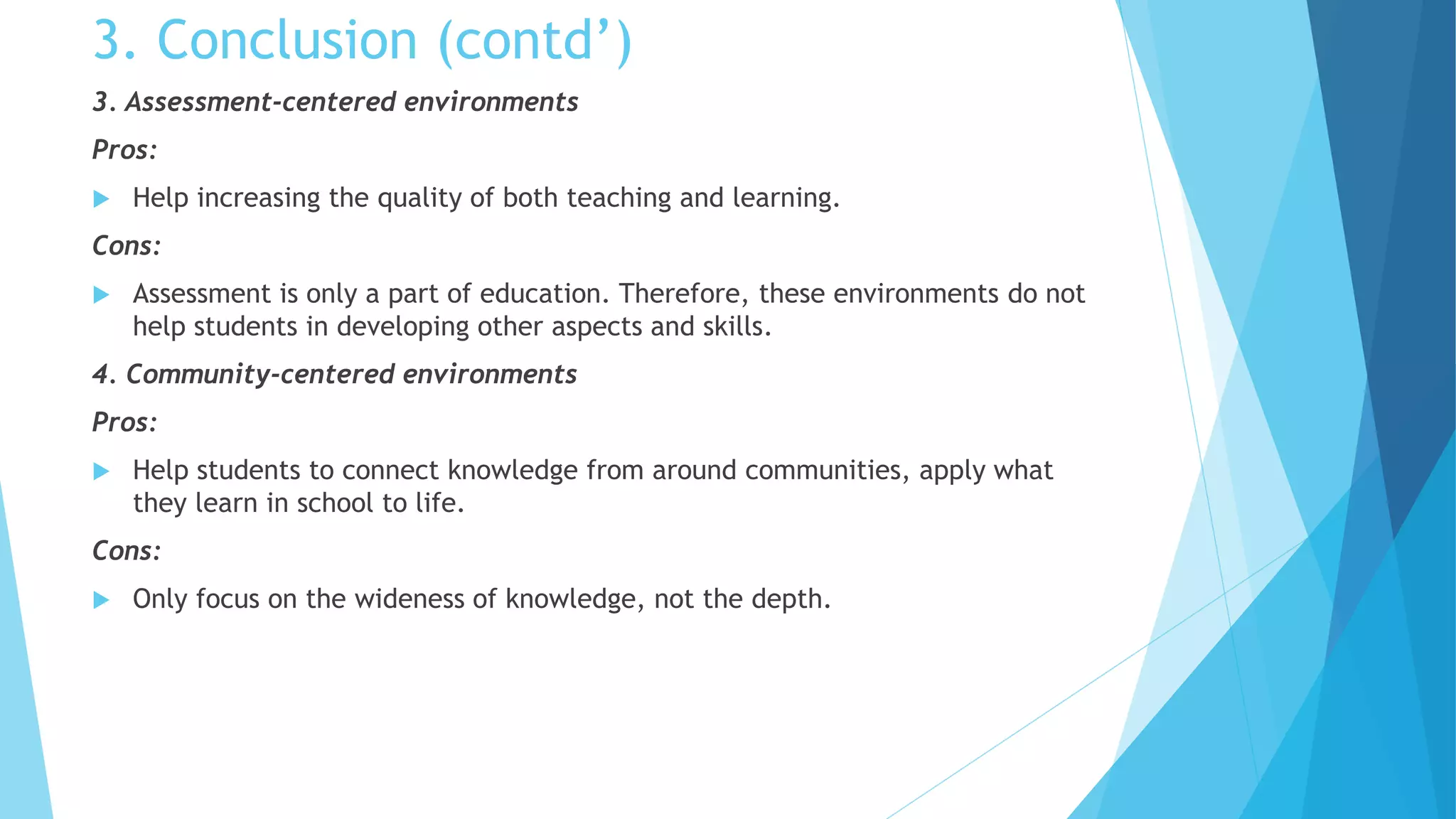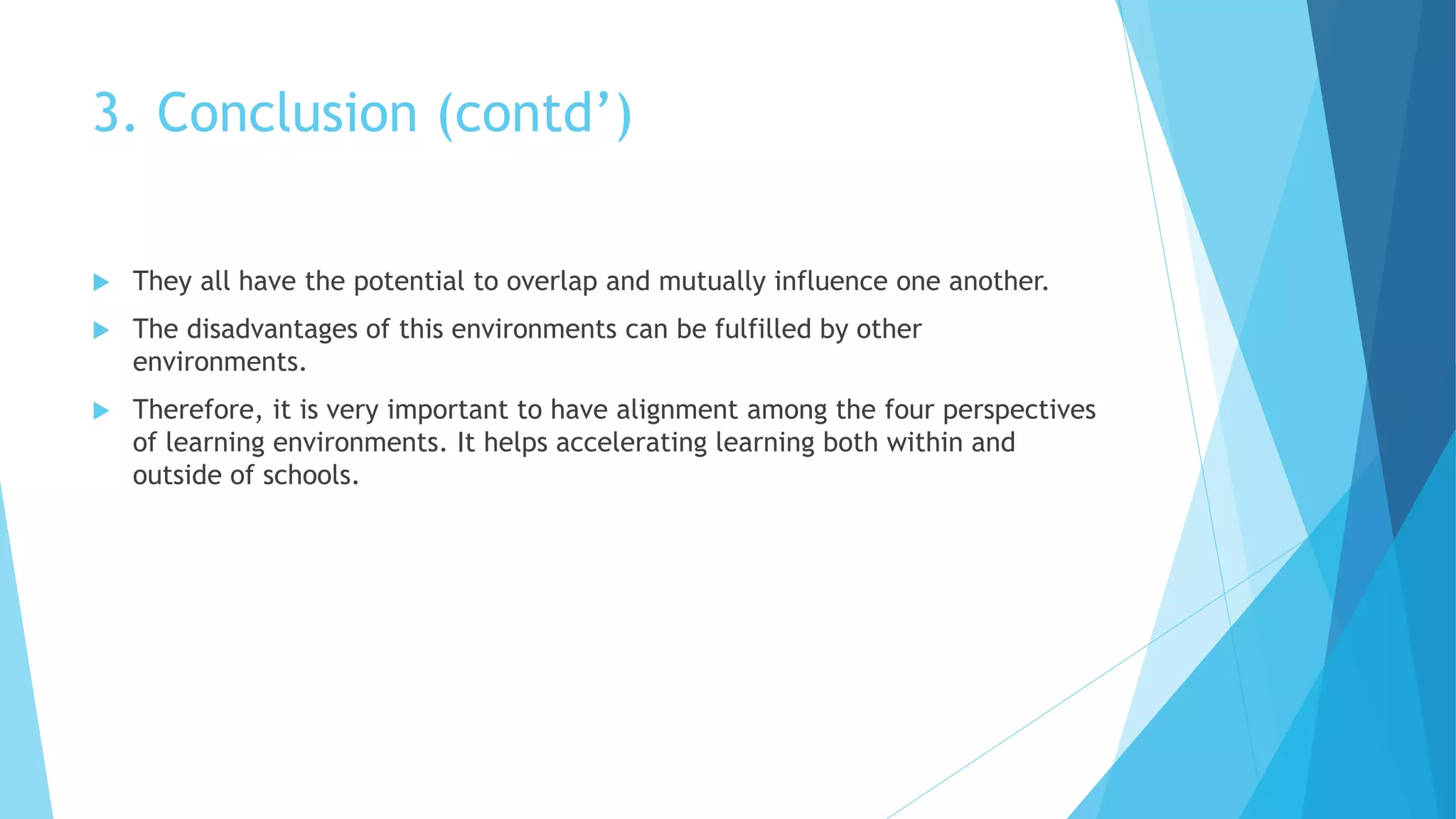The document discusses four types of learning environments: learner-centered, knowledge-centered, assessment-centered, and community-centered. Each type has strengths and weaknesses. Learner-centered environments focus on students but may not teach necessary skills. Knowledge-centered environments promote understanding but only focus on knowledge. Assessment-centered environments improve teaching and learning but assessment is only part of education. Community-centered environments connect learning to communities but only focus on breadth, not depth. An ideal learning environment would incorporate aspects of each type to address their weaknesses and accelerate both in-school and out-of-school learning.

